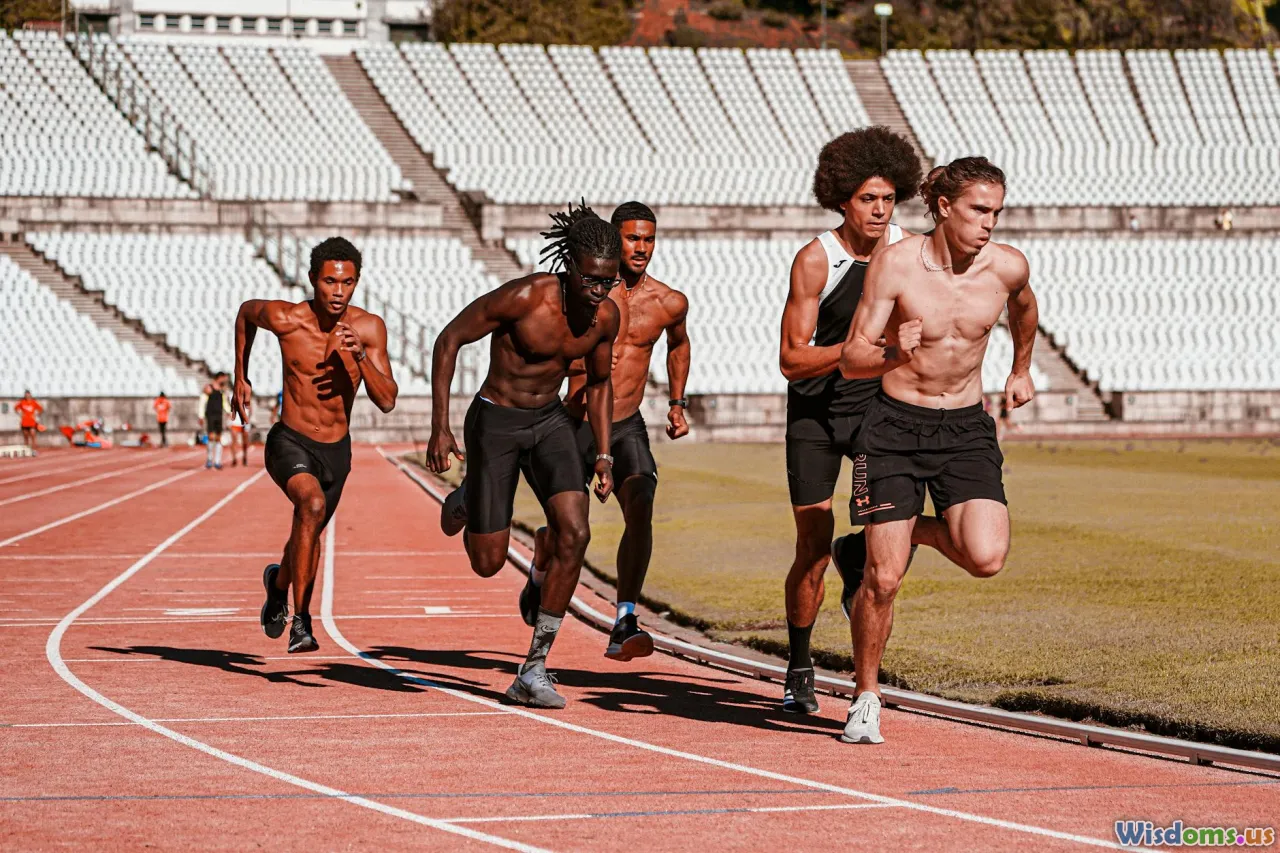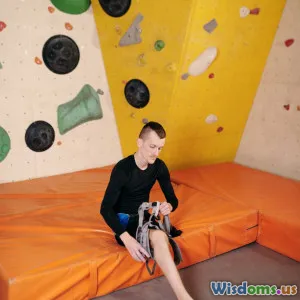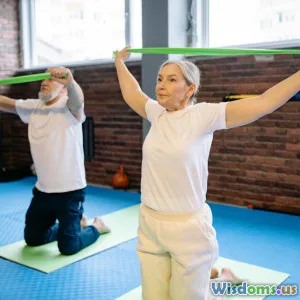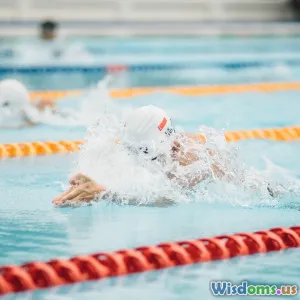
Why Sprinters Need Stronger Glutes Than Marathon Runners
11 min read Explore why sprinters require stronger glutes than marathon runners through biomechanics, muscle function, and training differences. (0 Reviews)
Why Sprinters Need Stronger Glutes Than Marathon Runners
Introduction
When you picture an elite sprinter zooming down a track, the image that often comes to mind is a figure loaded with raw power—explosive, fast, and muscular in all the right places, especially the glutes. Contrary to popular belief, the size and strength of a runner’s glute muscles can vastly differ based on the type of running they specialize in. Sprinters, who rely on explosive speed and power over short distances, typically have much stronger and more developed glutes compared to marathon runners who prioritize endurance. But why exactly is there such a disparity? And what makes the glutes uniquely critical in sprinting versus long-distance running?
This article explores the biomechanical and physiological reasons behind why sprinters need stronger glutes, unpacking how these powerhouse muscles contribute to speed, force generation, and efficiency in sprinting. We will contrast these demands with the endurance-focused mechanisms of marathon runners to provide a comprehensive understanding of this fascinating athletic difference.
The Glutes: An Overview of Function and Anatomy
Before diving into athlete-specific demands, it’s essential to understand the basics about the gluteal muscles. The glutes refer primarily to three muscles located at the back of the hip: the gluteus maximus, medius, and minimus.
- Gluteus Maximus: The largest muscle in the body and a powerful hip extensor responsible for driving the leg backward during running.
- Gluteus Medius: Important for hip abduction and stabilization of the pelvis during single-leg stance phases.
- Gluteus Minimus: Works alongside the medius with similar stabilization roles.
Together, these muscles provide hip extension, abduction, external rotation, and crucial pelvic stability—all vital for running.
Why Glute Strength Is Crucial for Sprinters
1. Explosive Power Generation
Sprint running is characterized by short bursts of maximum effort aimed at covering distance in the least amount of time. This requires immense force to be generated quickly.
Role of the Gluteus Maximus: Studies indicate that sprinting power largely arises from the hip extensor muscles, primarily the gluteus maximus. This muscle produces powerful hip extension, which drives the leg backward to propel the body forward. Sprinting biomechanist Dr. Bret Contreras often refers to the gluteus maximus as the "engine" of the sprint, emphasizing how stronger glutes translate into faster acceleration and ground reaction forces.
2. Efficient Force Transfer
For a sprinter, force generated by muscles must be efficiently transferred through the kinetic chain to the ground to maximize speed.
The glute medius and minimus stabilize the pelvis during each foot strike, preventing excessive side-to-side sway (pelvic drop), which can reduce running economy and speed. Without strong gluteal stabilizers, the athlete may lose ground reaction force efficiency.
3. Injury Prevention and Longevity
Sprint training puts tremendous stress on muscles and joints. Weak glutes increase the likelihood of compensations that can lead to hamstring strains and lower back pain—common injuries in sprinters. Studies corroborate that stronger glute muscles reduce risk factors for these injuries by maintaining proper alignment and absorbing shock.
Marathon Runners and Their Glutes: Endurance Over Power
Marathon runners, in contrast, focus more on sustaining aerobic activity over long durations rather than explosive power. Consequently:
1. Muscle Fiber Composition
Marathon runners tend to have a higher proportion of Type I (slow-twitch) muscle fibers in their glutes and legs. These fibers are fatigue-resistant, designed to sustain prolonged activity but generate less power.
Sprint athletes possess more Type II (fast-twitch) fibers in the gluteus maximus, allowing rapid contraction and high force but fatigue quickly. A 2012 study in the Journal of Applied Physiology found significant muscle fiber composition differences correlating with athletic specialization.
2. Glute Activation Patterns
Research using electromyography (EMG) shows that while sprinters heavily activate their glute muscles at high intensity during ground contact, marathon runners engage these muscles less forcefully but for extended periods to stabilize the pelvis.
3. Training Priorities
Since endurance running demands energy efficiency rather than power, marathon training rarely includes heavy resistance exercises targeting maximum glute strength. Instead, there’s an emphasis on aerobic conditioning, flexibility, and muscular endurance. This explains the generally smaller, less bulky glutes seen at long-distance elite runners.
Comparing Sprint and Marathon Biomechanics: Glutes at the Core
Let’s examine the step cycles:
| Aspect | Sprinters | Marathon Runners |
|---|---|---|
| Ground Contact Time | Very short (~80-120 ms) | Longer (~200-300 ms) |
| Hip Extension Force | Maximal/High | Moderate/Endurance-level |
| Pelvic Stability | Critical for power transfer | Important for energy efficiency |
| Glute Activation | High intensity, explosive | Moderate intensity, sustained |
The gluteus maximus contracts powerfully and rapidly in sprinters to create explosive hip extension. In marathon running, although glutes remain active to stabilize the pelvis and assist propulsion, the activation is less forceful and more endurance-oriented.
Real-World Examples
Sprinter Case Study: Usain Bolt
The legendary sprinter Usain Bolt demonstrates the significance of strong glutes. Video analyses and biomechanical assessments of Bolt highlight his massive, well-developed glute muscles contributing to his explosive speed and ability to generate extraordinary ground forces despite his tall frame.
Marathon Runner Case Study: Eliud Kipchoge
In contrast, Eliud Kipchoge, the world record marathon runner, displays a leaner lower body with well-conditioned endurance muscles but lacking the hypertrophied glutes seen in sprinters. His glutes remain strong but adapted for fatigue resistance rather than pure power.
Training Implications: Building Glutes for Sprinting vs Marathon Running
Sprinter Glute Strength Program
- Heavy Resistance Training: Incorporating deadlifts, hip thrusts, squats with high loads builds the maximal strength of glutes.
- Plyometrics: Exercises like bounding and box jumps enhance explosive power.
- Sprint Drills: High knee drills, resisted sprints to engage glutes during maximal hip extension.
This type of training increases fast-twitch fiber recruitment and neuromuscular efficiency necessary for sprint performance.
Marathon Glute Endurance Training
- Bodyweight Exercises: Clamshells, bridges focus on endurance and pelvic stability.
- High Repetition Low-Load Resistance: To promote muscular endurance without bulk.
- Mobility and Stability Work: Yoga and functional training support efficient running mechanics.
These promote sustained glute function over lengthy output but don't prioritize increasing muscle size or maximal force output.
Conclusion
The glutes play a vital, yet distinctly different, role in sprinting versus marathon running. Sprinters rely heavily on powerful, explosive contractions of the gluteus maximus for rapid acceleration and speed. Consequently, their glutes need to be stronger, better developed, and composed predominantly of fast-twitch muscle fibers. Marathon runners use their glutes with lower intensity over long durations to maintain pelvic stability and efficient running form, emphasizing endurance and fatigue resistance.
Understanding this distinction helps coaches, athletes, and fitness enthusiasts tailor training programs that optimize glute development suitable for their specific endurance or speed goals. The lesson is clear: the journey of running at top speed requires a gluteal engine finely tuned for power, while the marathon's test of stamina demands a gluteal system built for endurance and economic efficiency.
Next time you watch a sprinter explode off the blocks, remember—the secret to their speed often starts right at the powerhouse of the hips: the glutes.
Rate the Post
User Reviews
Popular Posts
















